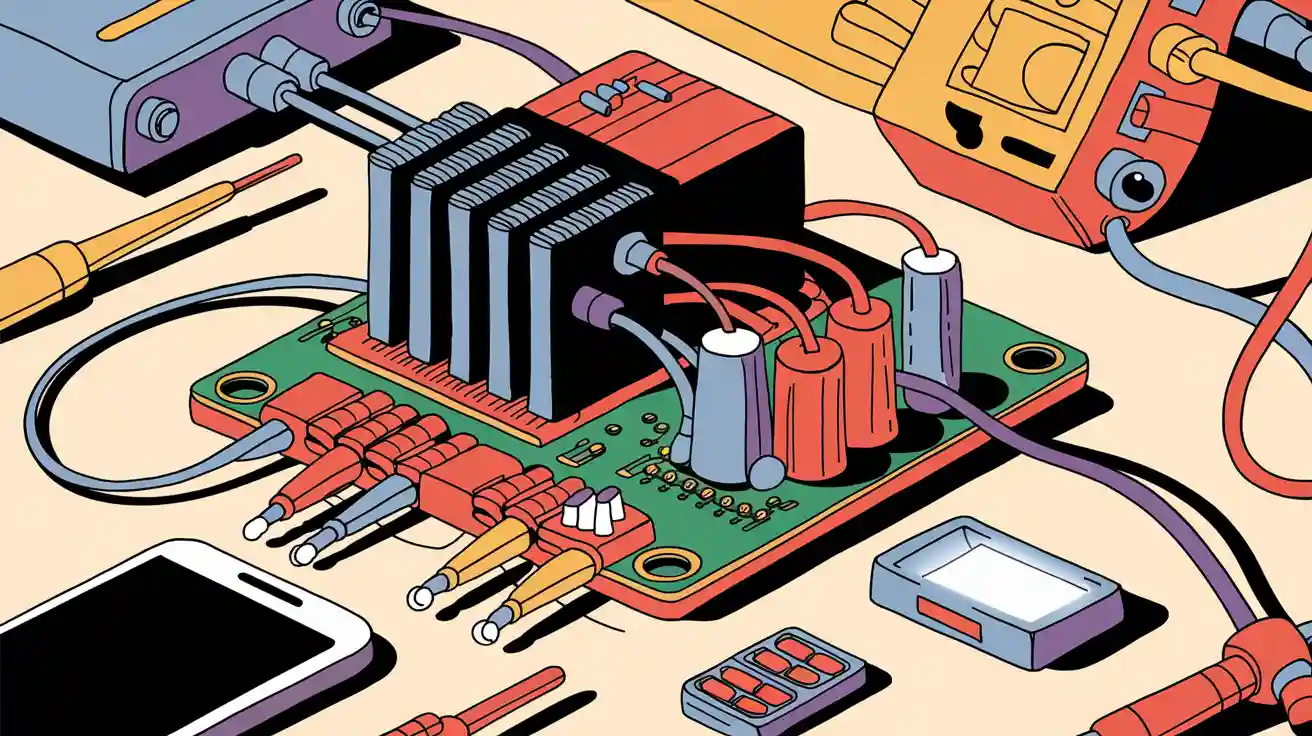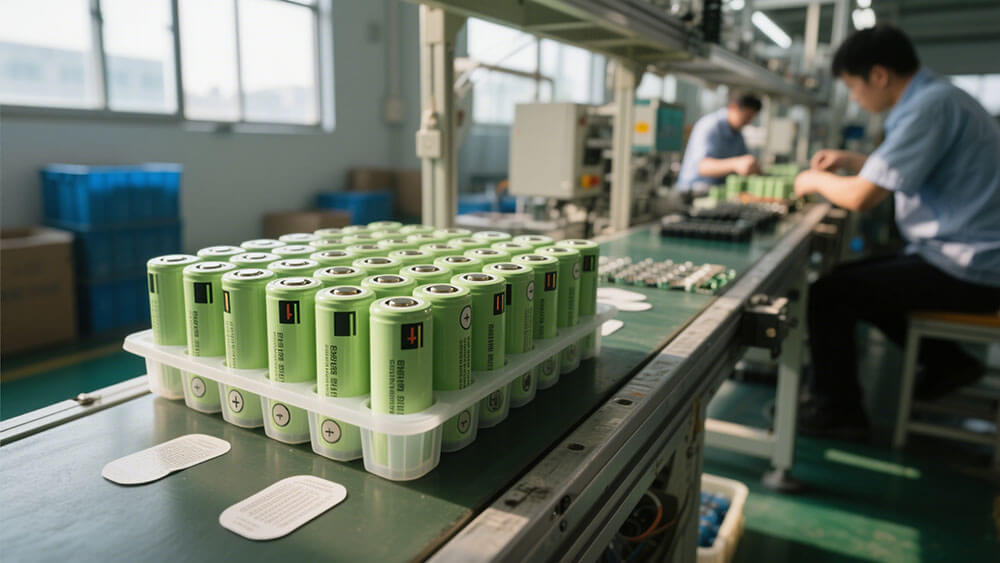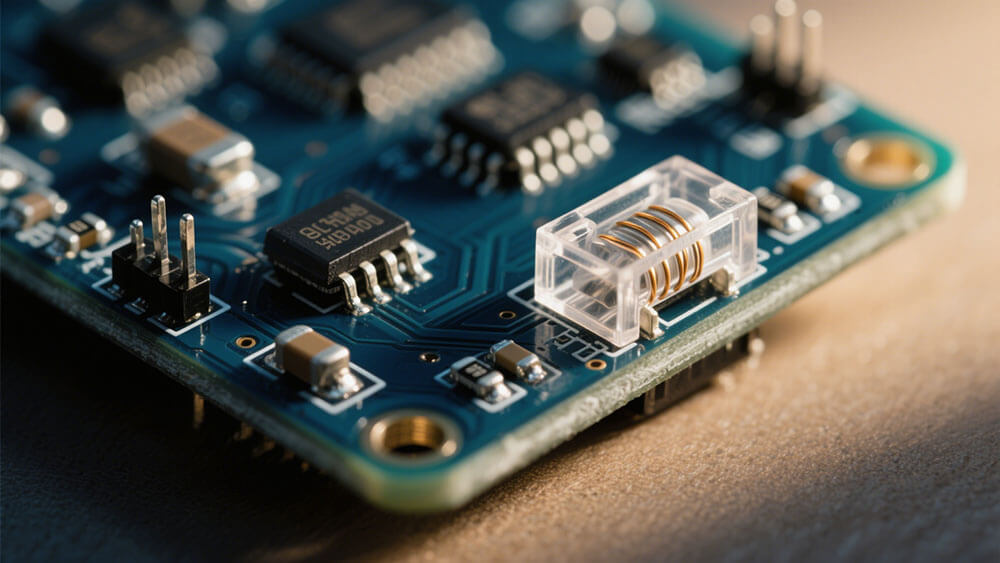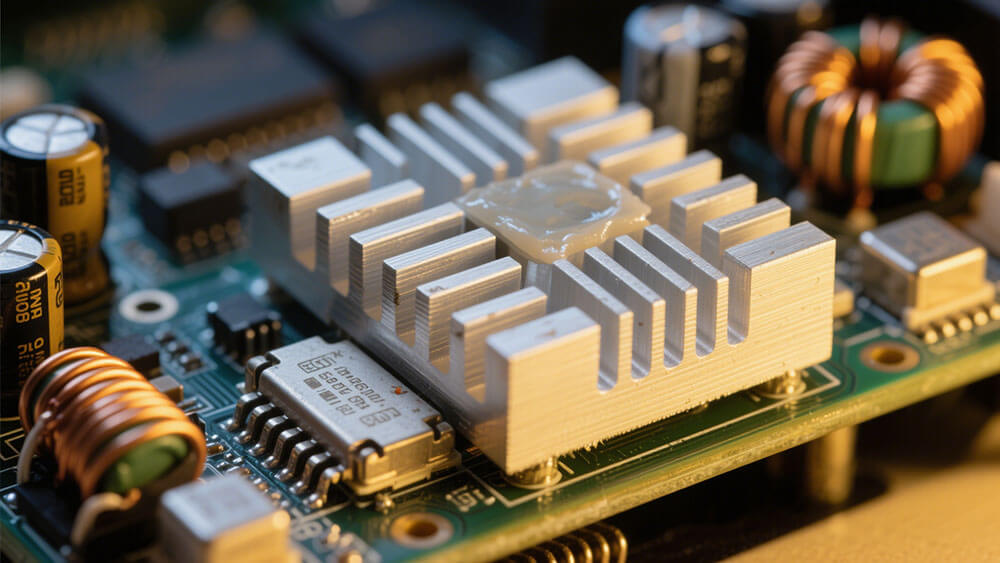
A voltage regulator is an essential device that ensures a stable voltage output despite fluctuations in input power or load. In lithium battery systems, it plays a critical role in maintaining consistent energy delivery, even during varying discharge rates. This stability protects sensitive components and enhances the system’s reliability and operational safety.
Key Takeaways
Voltage regulators keep voltage steady, protecting delicate parts in battery systems and improving reliability.
Picking the right voltage regulator is important; switching ones work better for high-power uses than linear ones.
Adding a voltage regulator boosts safety and performance, making it vital for things like medical tools and robots.
Part 1: Why Voltage Regulation is Important

1.1 The need for stable voltage in lithium battery systems
Lithium battery systems rely on stable voltage to ensure optimal performance and longevity. Voltage fluctuations can disrupt the delicate balance required for efficient energy transfer. A voltage regulator plays a pivotal role in maintaining this stability by dynamically adjusting the output to match the system’s requirements.
When the voltage drops below or exceeds the ideal range, it directly impacts the battery’s cycle life and capacity. For instance, maintaining a voltage below 4.20V per cell can double the cycle life but reduce the capacity. Conversely, raising the voltage above this threshold shortens the battery’s lifespan and compromises safety. The table below illustrates these effects:
Voltage Impact | Effect on Cycle Life | Effect on Capacity |
|---|---|---|
Drop below 4.20V/cell | Doubles cycle life | Decreases capacity |
Partial charging | Negates specific energy | Reduces reliability |
Raising above 4.20V/cell | Shortens life | Compromises safety |
Stable voltage also ensures that lithium battery systems can adapt to varying load demands without compromising performance. This is particularly critical in applications like medical devices, robotics, and consumer electronics, where consistent power delivery is essential for functionality. By integrating a voltage regulator, you can enhance the reliability of these systems and extend their operational lifespan.
Tip: For custom lithium battery solutions tailored to your specific voltage requirements, explore our custom battery solutions.
1.2 Risks of voltage fluctuations in energy storage and electronics
Voltage fluctuations pose significant risks to energy storage systems and electronic devices. These fluctuations can lead to overheating, reduced efficiency, and even permanent damage to sensitive components. In lithium battery systems, unregulated voltage can accelerate degradation, reducing the overall energy storage capacity.
Studies have quantified these risks using methodologies like disturbance power statistics and RLC model analysis. These approaches evaluate oscillation risks and predict grid stability, respectively. The table below summarizes these methodologies:
Methodology | Description |
|---|---|
Disturbance Power Statistics | Evaluates oscillation risks by counting disturbance intensity values against a threshold. |
RLC Model Analysis | Theoretical analysis predicting grid stability through data modeling. |
In industrial applications, voltage instability can disrupt operations, leading to costly downtime. Similarly, in infrastructure systems like transportation, unregulated voltage can compromise safety and efficiency. By incorporating a voltage regulator, you can mitigate these risks and ensure consistent power delivery across various applications.
Note: Voltage regulation is not just about performance; it also enhances safety and sustainability. Learn more about our commitment to sustainability at Large Power.
Part 2: How Does a Voltage Regulator Work

2.1 Core principles of voltage regulation
Voltage regulators operate on the principle of maintaining a consistent output voltage regardless of fluctuations in input voltage or load conditions. This stability is achieved through dynamic adjustments within the regulator’s circuitry. By comparing the output voltage to a reference voltage, the regulator compensates for variations, ensuring the connected devices receive the required power.
Modern voltage regulators, such as the LM350, exemplify these principles. They deliver up to 3.0 A of current with an adjustable output voltage range from 1.2 V to 33 V. These regulators simplify usage by requiring only two external resistors to set the desired voltage level. Additionally, they incorporate protective features like current limiting, thermal shutdown, and safe area compensation, ensuring reliability and safeguarding against overload.
Tip: When designing lithium battery systems, prioritize voltage regulators with built-in protection mechanisms to enhance system safety and performance.
2.2 Feedback control mechanisms in voltage regulators
Feedback control mechanisms form the backbone of voltage regulation. These systems continuously monitor the output voltage and compare it to a predefined reference. If discrepancies arise, the regulator adjusts its internal components to restore balance. This dynamic process ensures stable power delivery even under varying conditions.
Performance metrics validate the efficiency of feedback control mechanisms:
Performance Metric | Description |
|---|---|
Transient Response | Measures how quickly the system responds to changes in input, indicating the speed of regulation. |
Stability | Assesses the system’s ability to maintain performance under varying conditions and disturbances. |
Control Signal Generation | Evaluates the effectiveness of the control signals produced by the feedback mechanism. |
Robustness | Analyzes the system’s performance under uncertainties and its ability to maintain stability. |
For lithium battery systems, robust feedback control mechanisms are essential. They ensure consistent output voltage during battery discharge cycles, preventing disruptions in applications like medical devices, robotics, and consumer electronics.
Note: Feedback control mechanisms not only enhance performance but also contribute to system sustainability. Learn more about our commitment to sustainability at Large Power.
2.3 Key components: Linear vs. switching regulators
Voltage regulators fall into two primary categories: linear and switching. Each type has distinct characteristics that make it suitable for specific applications.
Feature | Linear Regulators | Switching Regulators |
|---|---|---|
Design Complexity | Simple Design | Complex Design |
Power Dissipation | Dissipates Excess Power | Stores Excess Power |
Efficiency | Lower Efficiency | Higher Efficiency |
Thermal Stress | Higher Thermal Stress | Lower Thermal Stress |
Linear regulators operate by dissipating excess power as heat, making them ideal for low-power applications where simplicity and low noise are priorities. However, their efficiency drops significantly under high load conditions. For example, a linear regulator dissipating 18 W of power for a 6 W load highlights its inefficiency.
Switching regulators, on the other hand, use high-frequency switching to store and release energy efficiently. By fully turning the transistor on or off, they minimize power loss and achieve higher efficiency levels. These regulators are well-suited for applications requiring high power and dynamic voltage adjustments, such as lithium battery systems in industrial and infrastructure settings.
Callout: Choosing the right voltage regulator depends on your system’s requirements. For lithium battery systems, switching regulators often provide the best balance of efficiency and performance. Explore our custom battery solutions for tailored recommendations.
Part 3: Types of Voltage Regulators

3.1 Linear voltage regulators: Features and limitations
Linear regulators provide a simple and cost-effective solution for voltage regulation. They operate by dissipating excess power as heat, ensuring a stable output voltage. These regulators are ideal for low-power applications where noise sensitivity is critical, such as medical devices and consumer electronics.
However, linear regulators face limitations in high-demand lithium battery systems. Their high dropout voltage, typically ranging from 1.5 to 3 V, results in significant power wastage. This inefficiency stems from the need for a higher input voltage than the output voltage. While low-dropout regulators (LDOs) have improved this aspect, they still struggle in scenarios requiring optimal efficiency. Additionally, linear regulators cannot boost voltage, which is essential during battery discharge cycles when voltage levels drop.
For lithium battery systems, linear regulators are best suited for applications with low power requirements and minimal heat dissipation concerns.
3.2 Switching voltage regulators: Efficiency and use cases
Switching regulators offer a more efficient alternative to linear regulators. They use high-frequency switching to store and release energy, minimizing power loss. These regulators excel in applications requiring dynamic voltage adjustments, such as robotics, infrastructure systems, and industrial equipment.
Key efficiency metrics highlight their performance:
Efficiency ratings vary significantly under light load conditions, ranging from 15% to 99%.
Steady efficiency is achieved above a load of 300mA, making them reliable for loads between 500mA and 2A.
Input voltage impacts efficiency, especially under light loads, which is crucial for real-world applications.
Switching regulators, including buck, boost, and buck-boost types, adapt to varying input and output voltage requirements. For lithium battery systems, they ensure consistent power delivery during discharge cycles, enhancing system reliability and safety.
3.3 Choosing the right voltage regulator for lithium battery systems
Selecting the appropriate voltage regulator depends on your system’s requirements. For low-power applications, linear regulators provide simplicity and low noise. However, switching regulators are the preferred choice for lithium battery systems due to their high efficiency and adaptability.
Consider these factors when choosing a regulator:
Efficiency: Switching regulators outperform linear regulators in high-demand scenarios.
Voltage Requirements: If your system needs voltage boosting, switching regulators are essential.
Application Type: For medical devices, robotics, or industrial systems, prioritize switching regulators for optimal performance.
By integrating the right voltage regulator, you can enhance the reliability and efficiency of your lithium battery systems. For tailored solutions, explore our custom battery solutions.
Voltage regulators play a vital role in stabilizing power systems by ensuring consistent voltage delivery. They enhance the performance and safety of lithium battery systems, protecting sensitive components from damage. Prioritizing voltage regulation in your system design improves efficiency and reliability, making it a critical step for long-term success in energy management.
FAQ
1. What is the difference between a linear and a switching voltage regulator?
Linear regulators dissipate excess energy as heat, making them simple but less efficient. Switching regulators store and release energy, offering higher efficiency for dynamic voltage adjustments.
2. How do voltage regulators protect lithium battery systems?
Voltage regulators stabilize output voltage, preventing overcharging or deep discharge. This ensures safe operation, extends battery life, and protects sensitive components from damage.
3. Can I use a single voltage regulator for multiple devices?
Yes, but ensure the regulator meets the combined power requirements of all devices. Overloading can cause overheating or failure, compromising system performance. For tailored solutions, explore our custom battery solutions.




